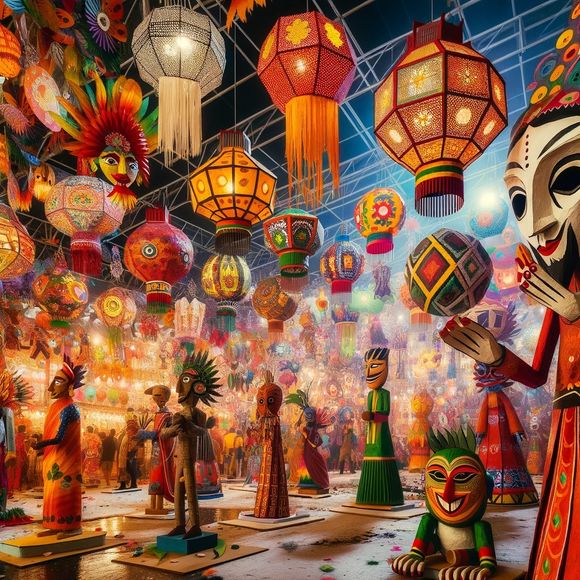Papier-mâché, the humble craft of layering paper and paste to create three-dimensional objects, has captivated imaginations for centuries. Its versatility and affordability have made it a beloved medium for artists and artisans worldwide. But papier-mâché’s true magic lies in its deep connection to traditional festivals, where it transcends mere craft to become an integral part of cultural expression and storytelling.
From Ancient Rites to Modern Spectacles
Papier-mâché’s roots can be traced back to ancient China, where it was used to create ceremonial masks and effigies. As the technique spread along trade routes, it found a home in diverse cultures, each adapting it to their unique traditions. In Japan, papier-mâché dolls called “kokeshi” became popular, while in Mexico, vibrantly decorated papier-mâché figures known as “alebrijes” emerged.
In Europe, papier-mâché gained prominence during the Renaissance, when it was used to create elaborate carnival masks and parade floats. This tradition continues today in cities like Venice and Nice, where papier-mâché masterpieces are paraded through the streets, transforming festivals into dazzling spectacles.
A Canvas for Cultural Narratives
Papier-mâché’s significance extends beyond its aesthetic appeal. It serves as a powerful medium for cultural storytelling, embodying the myths, legends, and beliefs of communities. In China’s Ghost Festival, papier-mâché effigies of ancestors are burned as offerings, while in Mexico’s Day of the Dead, intricate papier-mâché ofrendas adorn altars, honoring departed loved ones.
Papier-mâché also plays a crucial role in religious festivals. In India, papier-mâché figures of Hindu deities are worshipped during Ganesh Chaturthi, while in Spain, papier-mâché pasos, or floats, depict biblical scenes during Semana Santa processions.
A Force of Community and Celebration
The creation of papier-mâché for festivals is often a communal endeavor, fostering a sense of unity and shared purpose. In many cultures, families and neighborhoods gather to craft these elaborate figures, passing down techniques and traditions through generations. This collaborative spirit reinforces the social fabric of communities and strengthens cultural bonds.
Papier-mâché’s enduring presence in traditional festivals around the world is a testament to its versatility, cultural significance, and ability to bring people together. It is a reminder that even the simplest of materials can hold profound meaning, connecting us to our heritage and shaping our collective identity.
